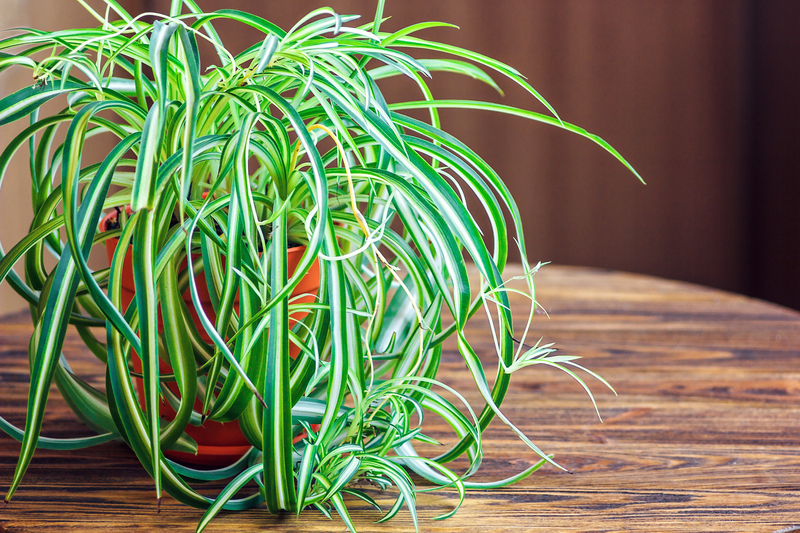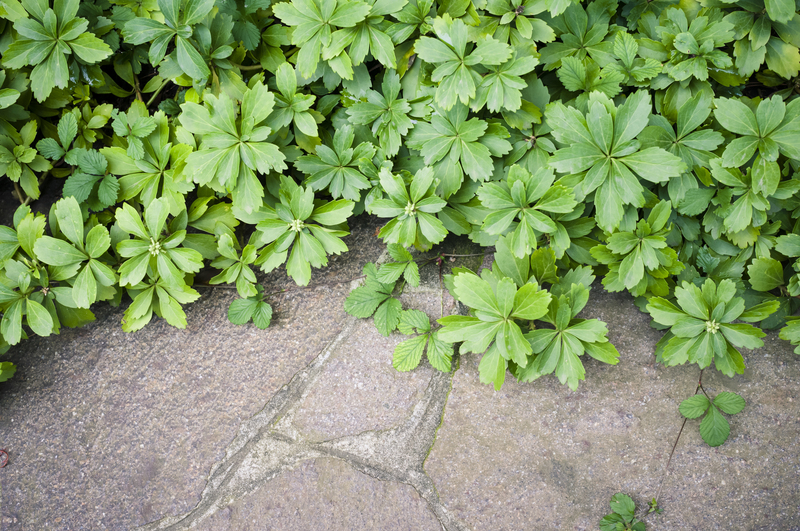Care for Your Lawn Like a Pro During Summer Drought Periods
Summer drought can transform lush, green turf into brown, dry patches almost overnight. When temperatures soar and rainfall dwindles, even the most resilient lawns require a special touch. This comprehensive, SEO-optimized guide will show you how to manage your lawn during drought, offer strategies to keep your yard healthy, and provide actionable tips to minimize water usage while maintaining stunning curb appeal. Read on to learn how to care for your lawn like a pro throughout drought-prone summer months.
Understanding Lawn Stress During Drought
Drought imposes serious stress on grass. When water becomes scarce, lawns quickly enter a state of dormancy to conserve energy, causing a dramatic change in their appearance. This is a normal adaptation, but extended drought periods can lead to permanent damage if the right care isn't provided.
- Dormancy: Grass may turn brown and crispy but isn't necessarily dead.
- Stunted Growth: Lack of water halts growth; mowing needs decrease.
- Root vulnerability: Shallow roots dry out quickly, making turf susceptible to disease.
- Soil compaction: Dry, hardened soil restricts the flow of oxygen and water.
Why Summer Drought Is So Tough on Lawns
Summer heat intensifies the lack of rainfall, quickly raising soil temperatures and speeding up evaporation rates. Lawns can lose up to one inch of water per week merely through evaporation and transpiration in hot conditions. Grasses like Kentucky bluegrass, fescues, and perennial ryegrass are particularly sensitive to drought, though warm-season varieties like Bermuda and zoysia fare better.

Essential Summer Lawn Care Tips for Drought Conditions
The secret to maintaining a healthy lawn during drought is combining smart watering practices, proper mowing, soil care, and stress management. Let's dive into professional lawn care strategies that work during a drought.
1. Watering Techniques for Drought-Resistant Lawns
Water management is the cornerstone of drought lawn care. Your watering techniques can make or break your lawn's ability to survive a tough summer.
- Water Early: Water between 4 AM and 9 AM to limit evaporation and fungal diseases.
- Deep and Infrequent Watering: A deep soak (half to one inch of water) per session trains roots to grow downward, increasing drought resilience.
- Target Roots Directly: Focus sprinklers around the root zone, not on leaves. Avoid overspray on sidewalks or driveways.
- Obey Local Watering Restrictions: Always comply with city or state mandates during drought periods.
- Rain Barrels and Irrigation Systems: Capture rainwater and use efficient drip irrigation to conserve water.
2. Smart Mowing Practices During Summer Drought
Mowing during drought deserves special attention. Cutting grass incorrectly weakens plants, leading to more damage and possibly losing large sections of your lawn.
- Raise the mower blade: Keep grass about 3-4 inches tall. Taller grass shades soil, slows evaporation, and develops deeper roots.
- Never remove more than 1/3 of grass height: Removing too much at once stresses the lawn.
- Keep mower blades sharp: Dull blades tear grass, exposing plants to more stress and pathogens.
- Leave grass clippings on the lawn (mulching): Clippings act as natural mulch, preserving soil moisture and returning nutrients.
3. Use Mulching and Groundcover for Drought-Proof Lawns
Improving soil moisture retention is crucial in dry, hot summers. Applying organic mulch or introducing drought-tolerant groundcovers can protect sensitive areas and create a buffer against dryness.
- Apply a 1-2 inch layer of organic mulch around trees and garden edges to minimize evaporation.
- Try groundcovers like creeping thyme, sedum, or clover -- they're hardy and water-efficient.
- Inspect bare spots: Reseed with drought-tolerant grass species or cover with mulch to prevent weed encroachment.
4. Soil Management and Lawn Health
A strong, healthy lawn begins with resilient soil. During drought periods, the focus should shift to improving the soil's ability to retain water and nutrients.
- Aerate in spring or fall: Aeration opens compacted soil, letting air and water reach roots -- avoid aerating during severe drought, which can do more harm than good.
- Add organic matter: Compost or aged manure increases water retention.
- Check soil pH: Drought-stressed lawns struggle if soil chemistry is off. Aim for pH 6-7 for most turf grasses.
Implementing Sustainable, Pro-Level Lawn Strategies
Lawn professionals use integrated methods to keep turf resilient throughout challenging summer months. By adopting these expert drought lawn maintenance techniques, you can significantly enhance the health and appearance of your yard.
Choose the Right Grass Type
Selecting the most suitable grass variety for your climate zone is a game changer. Drought-tolerant grasses offer longer-lasting green and better recovery.
- For cool climates: Tall fescue, fine fescues, and buffalo grass are durable under low-water conditions.
- For warm climates: Bermuda, zoysia, and St. Augustine grasses are known for their drought resistance and fast regrowth.
- Consider overseeding with drought-hardy blends in early fall or spring.
Fertilizing During Drought--Less Is More
Fertilizing a distressed lawn can backfire in drought periods. High nitrogen applications stimulate top growth, drawing precious moisture away from roots and making grass more vulnerable.
- Delay or reduce fertilization until drought breaks or rainfall resumes.
- Use organic slow-release fertilizers -- these are gentler and feed soil microbes to boost overall resilience.
- Avoid weed-and-feed products when lawns are under stress.
Combat Lawn Weeds and Pests Proactively
Drought and heat add stress to grass, making it susceptible to weeds and pests like chinch bugs or grubs. These invaders quickly overtake weakened areas, worsening the problem.
- Hand-pull weeds or use spot treatments with minimal water.
- Monitor for insect pests: Watch for unusual browning, thinning, or visible insects, and apply targeted controls only when needed.
- Encourage biological control and beneficial insects where possible.
Professional Drought Lawn Care--When to Seek Help
Although many lawn drought solutions can be managed without professional expertise, some scenarios call for help:
- Severe, spreading dead patches
- Persistent fungal diseases
- Infestations of grubs or chinch bugs
- Compact, hardpan soils that resist improvement
Contact a local lawn care expert who can assess irrigation, soil quality, and offer remediation plans specific to your property's needs.
Long-Term Drought Lawn Strategies
Beyond quick fixes, developing a long-term, sustainable lawn plan will help your grass withstand repeated summer droughts.
1. Rethink Lawn Size and Shape
Homeowners are increasingly choosing to reduce lawn areas and incorporate drought-tolerant plants, decorative stones, and hardscaping elements into their landscape. This approach:
- Decreases water usage
- Minimizes mowing and maintenance time
- Supports pollinators and biodiversity
2. Install Efficient Irrigation Systems
Upgrade traditional sprinklers to drip irrigation or soaker hoses for targeted, efficient watering with minimal runoff. Consider installing a smart irrigation controller to automatically adjust watering schedules based on real-time weather data.
3. Plan for Seasonal Recovery
Drought-dormant turf will usually recover when rainfall and cooler temperatures return. You can help by:
- Gently raking and overseeding weakened spots
- Topdressing with compost to rejuvenate soil
- Gradually resuming normal watering as the drought ends
Frequently Asked Questions About Summer Drought Lawn Care
1. How often should I water my lawn in a drought?
Deep watering once or twice a week is usually sufficient. The goal is to deliver 0.5-1 inch of water per session. If you're under watering restrictions, prioritize established trees and shrubs first, then apply any remaining water to the lawn.
2. Can a brown lawn be revived after a long drought?
Yes, in most cases. Grass entering dormancy can recover with cooler weather and renewed rainfall, especially if roots are intact. Overly harsh or extended drought may cause some loss, in which case overseeding and topdressing help restore your turf.
3. Should I fertilize my lawn during a summer drought?
No. Avoid applying fertilizer in drought, as it can burn roots and make stress worse. Wait until rain returns and the lawn begins to green up again.
4. What's the best mowing height during drought?
Set your mower to 3-4 inches for most turfgrass types during drought. Taller grass helps shade the soil and preserve moisture.

Key Takeaways: Lawn Care Like a Pro During Drought
- Prioritize deep, infrequent watering and water early in the morning to limit evaporation.
- Raise your mowing height and never cut more than 1/3 of the blade in one session.
- Stop fertilizing and weed-and-feed treatments during severe drought.
- Mulch clippings and apply organic matter to improve soil health.
- Consider reducing lawn size and implementing drought-tolerant landscaping features.
Conclusion: Achieve a Drought-Resistant Lawn Year After Year
Taking care of your lawn during a summer drought period requires adaptability, knowledge, and a willingness to try new methods. By mastering professional techniques like deep watering, smart mowing, mulching, and choosing drought-resistant grass species, you'll not only survive the heat but help your lawn thrive year after year.
Combine these summer drought lawn care tips with a commitment to sustainable gardening and you'll enjoy a beautiful lawn, even when the weather doesn't cooperate. Remember--a healthy, resilient lawn is a long-term investment. Take the steps outlined here, and you'll be caring for your lawn like a true professional through every summer drought.